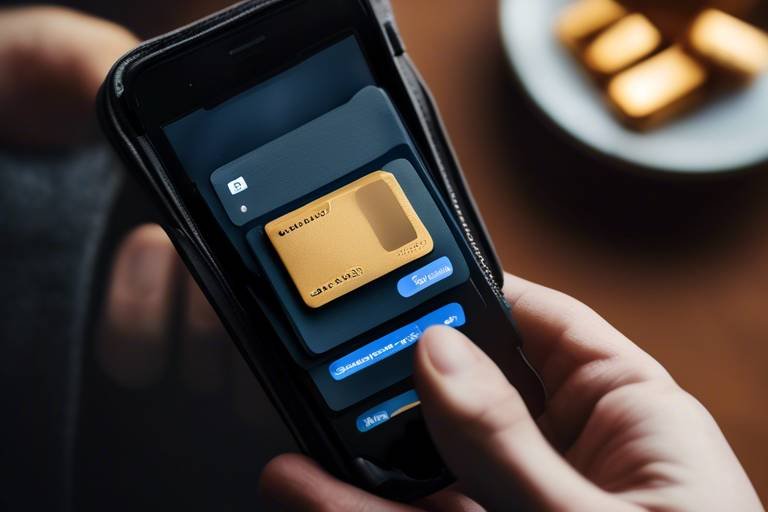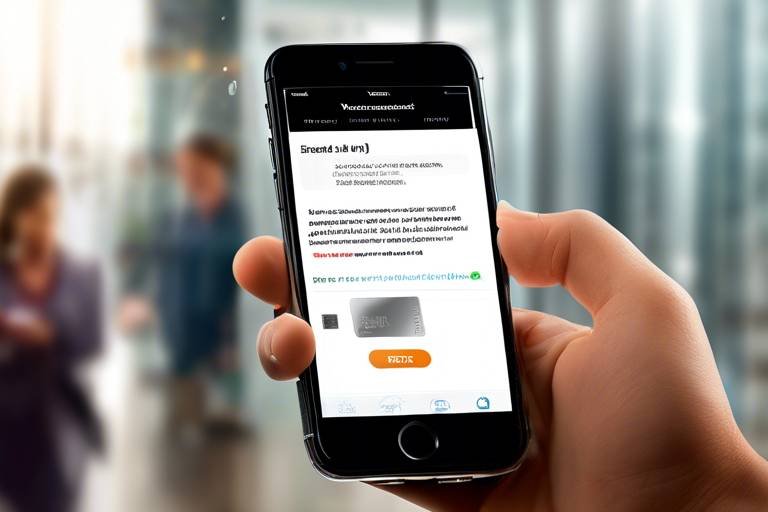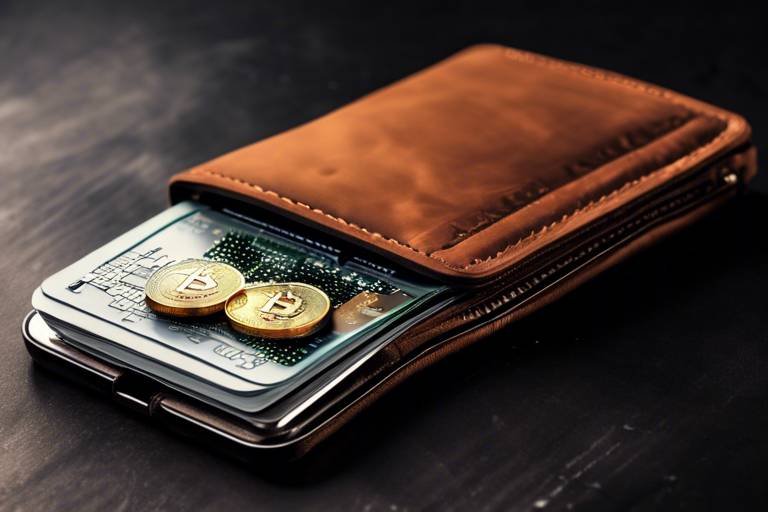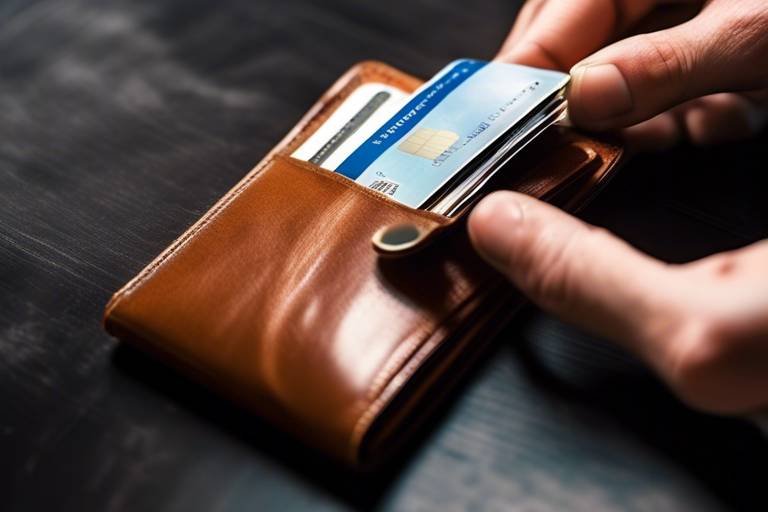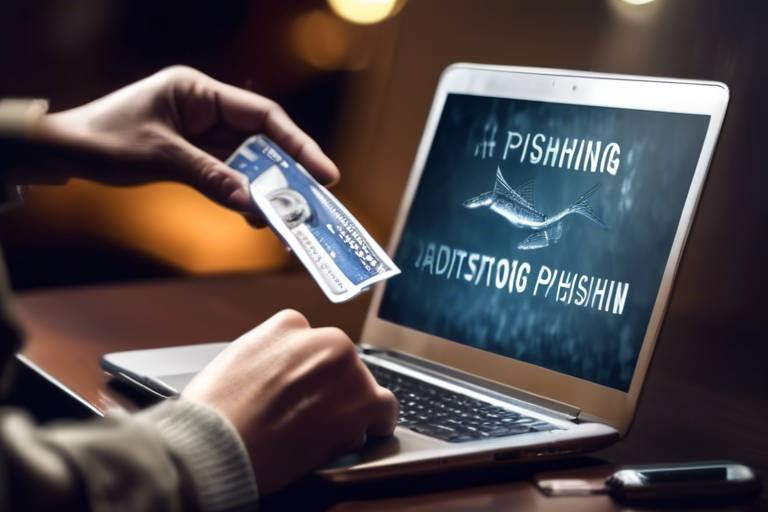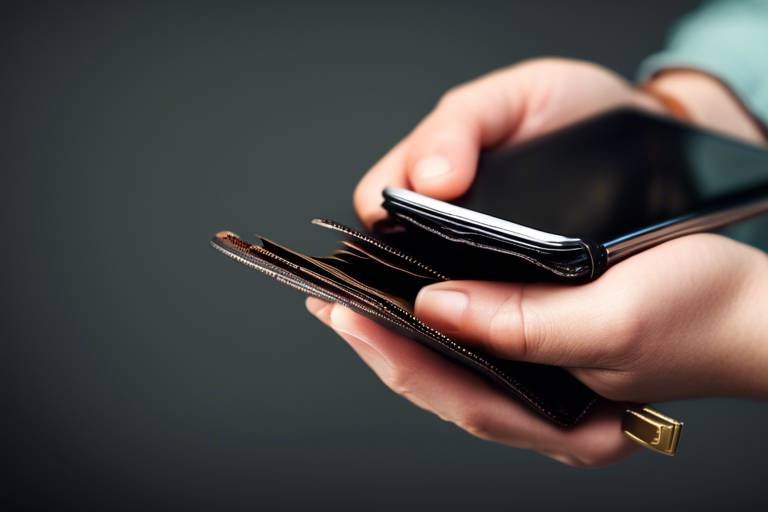How to Create a Wallet for Your Crypto Trading Team
In today's fast-paced world of cryptocurrency trading, having a secure and efficient wallet is essential for any trading team. Just like a bank account holds your money, a crypto wallet stores your digital assets. However, it's not just about having a wallet; it's about choosing the right one that aligns with your team's trading strategies and security needs. In this article, we will delve into the intricacies of setting up a wallet for your crypto trading team, ensuring you have all the knowledge needed to make informed decisions.
First things first, you need to understand the different types of wallets available. There are hot wallets, cold wallets, and hardware wallets, each serving unique purposes and catering to different trading styles. Imagine hot wallets as your everyday checking account—convenient but potentially risky if not managed properly. On the other hand, cold wallets are akin to a savings account, where you store your assets securely for the long term, away from the prying eyes of hackers. By the end of this guide, you'll have a clear understanding of which wallet type suits your trading team best.
As we journey through the selection process, it's crucial to consider various factors such as security, accessibility, and compatibility with different cryptocurrencies. Think of these factors as the pillars that will uphold your trading team's financial fortress. Choosing the right wallet is not just about convenience; it’s about safeguarding your assets against potential threats. You wouldn’t want to put your hard-earned money into a wallet that’s as secure as a paper bag, right?
When it comes to hot wallets versus cold wallets, each has its pros and cons. Hot wallets are fantastic for active traders who need quick access to their funds, but they come with higher security risks. Conversely, cold wallets offer robust security by keeping your assets offline, making them less vulnerable to hacks. This is particularly important for long-term storage, where the goal is to protect your investments from the ever-evolving landscape of cyber threats.
Another innovative solution is the use of multi-signature wallets. These wallets require multiple private keys to authorize a transaction, adding an extra layer of security that could be a game-changer for your trading team. Imagine needing multiple keys to unlock a vault—this ensures that no single person has complete control, reducing the risk of fraud and theft. Implementing such a wallet could be the difference between a secure trading operation and one that is susceptible to unfortunate mishaps.
Now that we’ve covered the basics, let’s dive into the step-by-step process of setting up your wallet. It may sound daunting, but with the right guidance, it’s as easy as pie. Start by selecting a reliable wallet provider that meets your team's needs. Once you’ve made your choice, you’ll need to create a wallet account, which involves picking a strong password and enabling two-factor authentication. This extra layer of security is like having a bouncer at your club—only allowing trusted individuals inside.
Lastly, let’s talk about the importance of backing up your wallet. This step is crucial to prevent the loss of funds due to unforeseen circumstances. There are various backup methods available, including writing down your recovery phrase or using encrypted digital backups. Think of it as an insurance policy for your crypto assets; you wouldn’t drive a car without insurance, would you? Implementing best practices for wallet backups will ensure that your trading team’s assets remain safe, even in the face of adversity.
Here are some common questions that may arise when setting up a wallet for your crypto trading team:
- What is the best type of wallet for beginners? Hot wallets are typically easier to use for beginners due to their user-friendly interfaces.
- How can I ensure my wallet is secure? Always enable two-factor authentication and use a strong, unique password.
- Can I use multiple wallets? Yes, many traders use a combination of hot and cold wallets for optimal security and accessibility.

Understanding Wallet Types
When diving into the world of cryptocurrency, one of the first things you need to grasp is the concept of wallets. Think of a crypto wallet as your digital bank account, but instead of storing dollars, it holds cryptocurrencies. There are several types of wallets available, each designed to cater to different needs and preferences. Understanding these wallet types is crucial for your trading team, as it can significantly impact your trading efficiency and security.
The primary categories of wallets are hot wallets, cold wallets, and hardware wallets. Each type has its unique characteristics, advantages, and disadvantages, making them suitable for different trading strategies. Let’s explore these options in more detail:
| Wallet Type | Description | Best For |
|---|---|---|
| Hot Wallets | Connected to the internet, allowing for quick transactions. | Active traders needing immediate access to funds. |
| Cold Wallets | Offline storage, providing enhanced security against hacks. | Long-term investors wanting to hold assets securely. |
| Hardware Wallets | Physical devices that store your cryptocurrencies offline. | Users prioritizing security while still needing access. |
Hot wallets are like your everyday checking account—easy to access and perfect for daily transactions. They’re typically user-friendly and allow for quick trades, which is why many active traders prefer them. However, this convenience comes with a price: they are more vulnerable to hacks and cyber threats. If your team opts for a hot wallet, ensuring robust security measures is a must.
On the other hand, cold wallets resemble a safety deposit box. They are not connected to the internet, making them significantly less susceptible to online attacks. This type of wallet is ideal for long-term storage of your cryptocurrencies, especially if your team plans to hold onto their assets for an extended period. While the access might be less convenient, the peace of mind that comes with enhanced security is often worth the trade-off.
Lastly, hardware wallets combine the best of both worlds. They store your crypto offline, yet they offer a way to connect to the internet when necessary. These physical devices are often seen as the gold standard for security among crypto enthusiasts. However, they can be a bit pricey and may require a learning curve for new users.
Ultimately, the choice of wallet type will depend on your trading team's specific needs and strategies. Consider factors like how often you trade, the amount of cryptocurrency you hold, and your overall risk tolerance. By understanding the different wallet types and their functionalities, your team can make informed decisions that align with your trading goals.

Choosing the Right Wallet
When it comes to cryptocurrency trading, selecting the right wallet is a decision that can significantly impact your team's success. With a plethora of options available, it’s essential to consider several factors that align with your trading objectives and security preferences. First and foremost, think about the security of your assets. In the world of digital currencies, hackers are always on the prowl, and a secure wallet can be your first line of defense. But security shouldn't come at the cost of accessibility; your team needs to be able to access funds quickly during trading hours. Thus, finding the right balance between these two factors is crucial.
Another aspect to ponder is compatibility with various cryptocurrencies. Not all wallets support every digital asset, so if your trading team is diversifying its portfolio, ensure that the wallet you choose can accommodate your entire range of coins. Additionally, consider the user experience. A wallet that’s complicated to navigate can lead to errors and frustration, especially during high-stakes trading moments. You want a wallet that is intuitive and user-friendly, allowing your team to focus on trading rather than fumbling with technology.
To help you visualize the differences among wallet options, here’s a quick comparison table:
| Wallet Type | Security Level | Accessibility | Best For |
|---|---|---|---|
| Hot Wallet | Low to Moderate | High | Active Trading |
| Cold Wallet | High | Low | Long-term Storage |
| Hardware Wallet | Very High | Moderate | All Users |
Ultimately, the wallet you choose should cater to your team's specific needs. Are you planning to trade frequently or hold assets for the long haul? If your strategy leans more toward active trading, a hot wallet might be your best bet for quick access. However, if your focus is on long-term investment, a cold wallet or hardware wallet can provide the security needed to protect your assets from potential threats.
In addition to these considerations, don’t forget to evaluate the reputation of the wallet provider. Research user reviews and community feedback to ensure that the wallet you choose has a solid track record. After all, the last thing you want is to entrust your hard-earned assets to a wallet that lacks credibility. Remember, in the world of crypto, your wallet is not just a digital container; it’s the fortress that protects your wealth.
In conclusion, choosing the right wallet is a critical step for your crypto trading team. By weighing factors such as security, accessibility, compatibility, and user experience, you can make an informed decision that aligns with your trading strategy and risk tolerance. So, take your time, do your research, and find the wallet that best suits your team's needs!
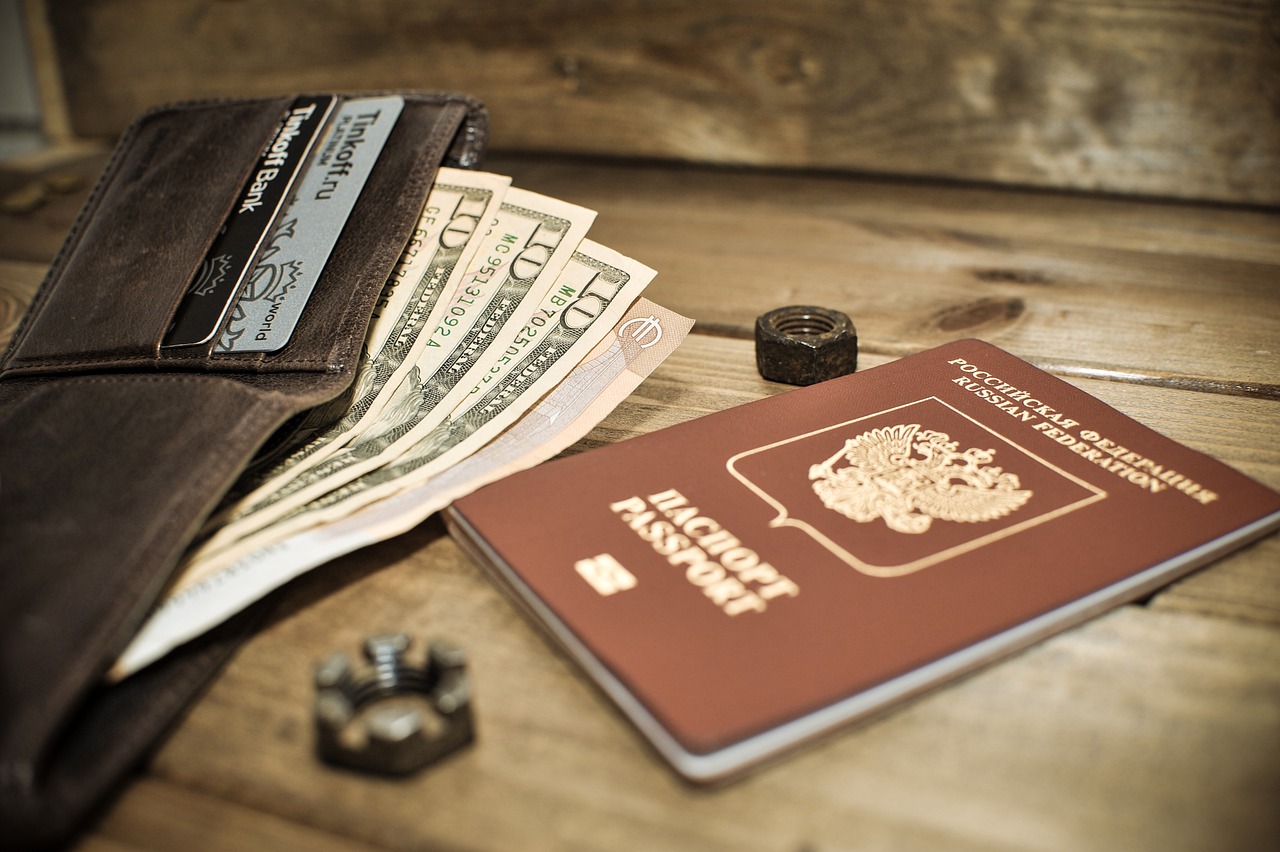
Hot Wallets vs. Cold Wallets
When it comes to managing your cryptocurrency assets, the choice between hot wallets and cold wallets can feel a bit like deciding between a fast sports car and a secure vault. Each has its own strengths and weaknesses, and understanding these can help your trading team make an informed decision that aligns with your specific needs and risk tolerance.
Hot wallets are like the sporty vehicles of the crypto world. They are connected to the internet, making them incredibly convenient for quick transactions and trading. If your team is actively buying and selling cryptocurrencies, a hot wallet can provide the speed and accessibility you need. However, this convenience comes at a cost. Because they are always online, hot wallets are more susceptible to hacking and other security threats. Think of it as driving your sports car through a crowded city; while it’s thrilling, you have to be on high alert for potential dangers.
On the other hand, cold wallets operate more like a safe deposit box in a bank. These wallets store your cryptocurrencies offline, which significantly reduces the risk of theft or hacking. If your trading strategy involves holding onto your assets for the long term, cold wallets are a fantastic option. They offer peace of mind, knowing that your investments are safeguarded against online threats. However, this added security comes with a trade-off in convenience. Accessing your funds may take a bit longer, as you’ll need to connect the wallet to the internet whenever you want to make a transaction. It’s akin to needing to drive to the bank to access your safe; it requires more effort but ultimately keeps your assets secure.
To help visualize the differences, here’s a quick comparison:
| Feature | Hot Wallets | Cold Wallets |
|---|---|---|
| Accessibility | High - Always online | Low - Requires internet connection to access |
| Security | Lower - Vulnerable to hacks | Higher - Offline storage |
| Best Use Case | Active trading | Long-term storage |
| Examples | Mobile wallets, web wallets | Hardware wallets, paper wallets |
In conclusion, your choice between hot wallets and cold wallets should be guided by your trading team's strategy and risk appetite. If you're looking for quick access and are comfortable managing the associated risks, hot wallets could be the way to go. However, if security is your top priority and you plan on holding assets for an extended period, cold wallets will provide the protection you need. Ultimately, many traders find a combination of both wallets works best, allowing them to balance accessibility with security.
Q: Can I use both hot and cold wallets simultaneously?
A: Absolutely! Many traders use hot wallets for day-to-day transactions and cold wallets for long-term storage of their assets.
Q: How do I transfer funds from a hot wallet to a cold wallet?
A: Transferring funds is straightforward. You simply generate a withdrawal from your hot wallet and input the address of your cold wallet. Always double-check the address to avoid mistakes!
Q: Are there any fees associated with using hot or cold wallets?
A: Fees can vary depending on the wallet provider and the type of transactions you make. Always review the fee structure before committing to a wallet.
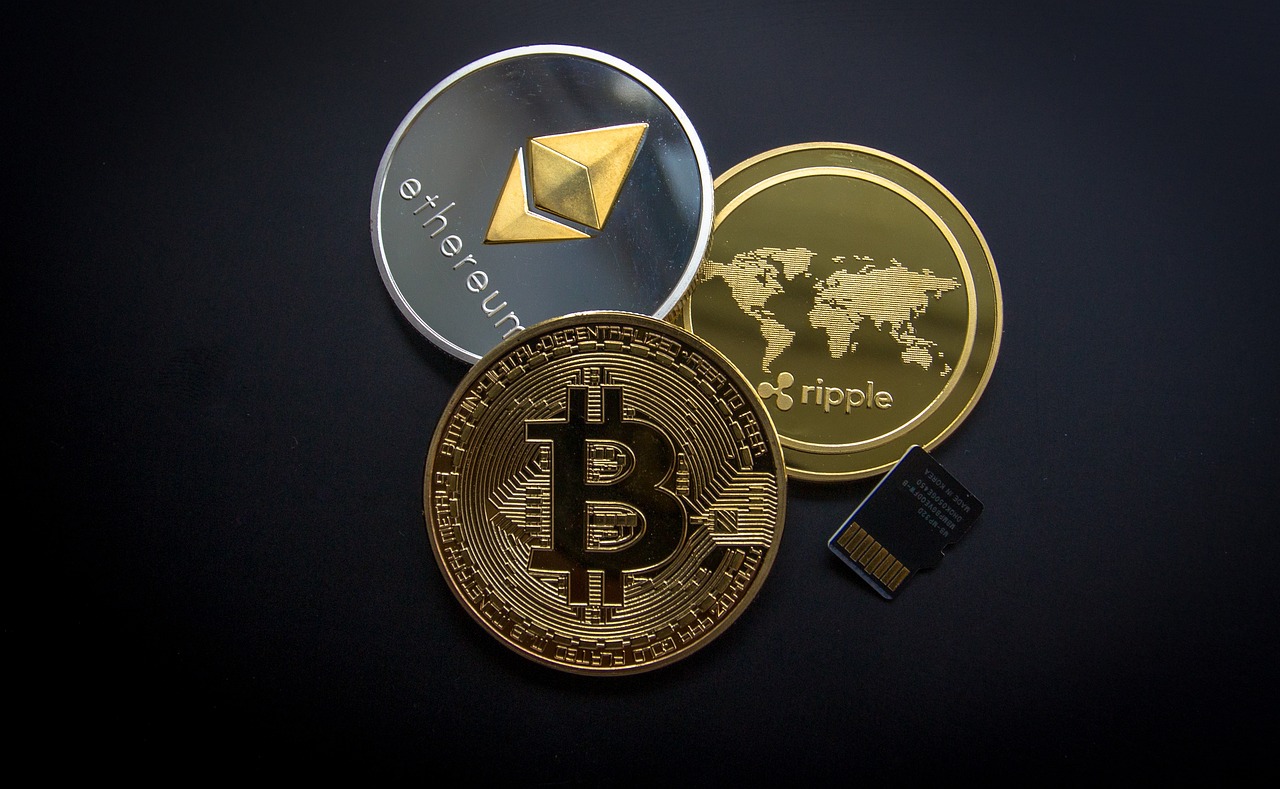
Advantages of Hot Wallets
Hot wallets are a popular choice among crypto traders, and for good reason! They offer an array of benefits that cater to the fast-paced world of cryptocurrency trading. One of the most significant advantages is convenience. Hot wallets are typically web-based or mobile applications that allow users to access their funds anytime and anywhere, making it easy to execute trades on the fly. Imagine being able to buy the dip or sell at the peak without any delays—this is the power of a hot wallet!
Another appealing feature of hot wallets is their speed. Since they are always connected to the internet, transactions can be processed almost instantly. This immediacy is crucial in a market that can change in seconds. When you're trading, every second counts. The ability to quickly access and transfer your assets can mean the difference between a profit and a loss.
Moreover, many hot wallets come equipped with user-friendly interfaces and advanced features that enhance the trading experience. For instance, some wallets allow you to track market trends and manage multiple cryptocurrencies from a single platform. This can save you time and effort, as you won't need to juggle multiple apps or platforms to manage your portfolio.
However, it's essential to acknowledge that with great convenience comes some risks. Hot wallets are more vulnerable to hacking attempts compared to their cold counterparts. Therefore, while they are excellent for active trading, it's crucial to implement robust security measures. Here are some tips to enhance the security of your hot wallet:
- Use strong, unique passwords and change them regularly.
- Enable two-factor authentication for an added layer of protection.
- Be cautious of phishing attempts and always verify the website or app you are using.
In conclusion, hot wallets are ideal for traders who prioritize speed and accessibility. They allow for quick transactions and easy management of assets, making them a favorite among active traders. Just remember to stay vigilant and secure your wallet to enjoy all the benefits they offer!
Q1: Are hot wallets safe to use?
A1: While hot wallets offer convenience and speed, they are more susceptible to hacking. It's essential to implement strong security measures like two-factor authentication and strong passwords.
Q2: Can I store multiple cryptocurrencies in a hot wallet?
A2: Yes, many hot wallets support a variety of cryptocurrencies, allowing you to manage multiple assets in one place.
Q3: How do I back up my hot wallet?
A3: Most hot wallets provide options for backing up your wallet, such as exporting recovery phrases or private keys. Ensure you follow the wallet's specific instructions for secure backup.
Q4: Should I use a hot wallet for long-term storage?
A4: Hot wallets are best suited for active trading rather than long-term storage. For long-term holdings, consider using cold wallets for enhanced security.

Benefits of Cold Wallets
When it comes to safeguarding your cryptocurrency investments, cold wallets stand out as a fortress against potential threats. Unlike their hot counterparts, which are connected to the internet and thus more vulnerable to hacks and cyber attacks, cold wallets operate offline. This fundamental difference is what makes them an essential choice for anyone serious about protecting their digital assets.
One of the primary benefits of cold wallets is their enhanced security. By keeping your cryptocurrencies offline, cold wallets minimize the risk of being targeted by hackers. Imagine your digital assets as a treasure chest buried deep in a secure location, away from prying eyes. This method of storage is particularly advantageous for long-term investors who are not actively trading and prefer to hold onto their assets without the constant worry of online threats.
Moreover, cold wallets are incredibly user-friendly once set up. They often come with straightforward interfaces, allowing you to manage your assets with ease. You can think of a cold wallet as a traditional bank vault; while it may take a little effort to access your funds, the peace of mind it provides is well worth it. Here are some additional benefits:
- Protection Against Malware: Since cold wallets are not connected to the internet, they are immune to malware attacks that can compromise your private keys.
- Control Over Your Assets: With a cold wallet, you have full control over your private keys, meaning you are the sole guardian of your cryptocurrency.
- Long-Term Storage Solution: Cold wallets are ideal for storing large amounts of cryptocurrency for extended periods, making them a perfect choice for HODLers.
In summary, cold wallets offer a robust solution for those looking to secure their cryptocurrency investments against the myriad of risks present in the digital world. By choosing a cold wallet, you are not just storing your assets; you are actively taking steps to protect your financial future. It’s like having an insurance policy for your investments—one that safeguards your wealth from the unpredictable nature of the online environment.
Here are some common questions about cold wallets that may help clarify their benefits:
- What is a cold wallet? A cold wallet is a type of cryptocurrency wallet that is not connected to the internet, providing enhanced security for your digital assets.
- Are cold wallets completely safe? While they offer superior protection compared to hot wallets, no storage method is entirely risk-free. It's essential to follow best practices for backup and security.
- How do I access my cold wallet? Accessing a cold wallet typically requires a secure device or hardware that stores your private keys. Always ensure that you keep this device safe and secure.

Multi-Signature Wallets
In the ever-evolving world of cryptocurrency, security is paramount, especially for trading teams that handle significant amounts of digital assets. This is where come into play. Unlike traditional wallets that require only one private key for transactions, multi-signature wallets require multiple private keys from different users to approve a transaction. Think of it as needing several keys to unlock a safe; this added layer of security helps to mitigate risks associated with a single point of failure.
Imagine your trading team is like a ship's crew navigating through turbulent waters. Each crew member has a specific role to ensure the ship stays afloat and reaches its destination safely. Similarly, a multi-signature wallet distributes the responsibility of managing funds among several team members. This way, no single individual has complete control over the wallet, which significantly reduces the risk of theft or unauthorized access. If one key is compromised, the funds remain secure, as the other keys are still needed to authorize any transaction.
Moreover, the implementation of multi-signature wallets can foster a sense of accountability within your trading team. By requiring multiple approvals for transactions, it encourages team members to communicate and collaborate effectively. This can lead to better decision-making and reduce the likelihood of impulsive trading actions that could jeopardize the team's assets. In essence, it's not just about security; it’s about building a culture of responsibility and teamwork.
However, while multi-signature wallets offer enhanced security, they are not without their challenges. Setting up such a wallet can be more complex than traditional wallets, and it requires careful planning to determine how many signatures will be needed and who will hold them. Additionally, if a key holder loses their key or is unavailable, it may complicate access to the funds. Therefore, it's crucial to have a clear strategy in place for managing the keys and ensuring that all team members understand their roles.
To summarize, multi-signature wallets can be a powerful tool for crypto trading teams looking to enhance their security. They provide a robust defense against unauthorized access and promote a collaborative approach to managing funds. However, it’s essential to weigh the benefits against the complexities involved in their setup and management. When used correctly, they can be a game-changer for your trading strategy.
- What is a multi-signature wallet? A multi-signature wallet is a type of cryptocurrency wallet that requires multiple private keys to authorize a transaction, enhancing security.
- How does a multi-signature wallet improve security? By requiring multiple approvals, it minimizes the risk of theft or unauthorized access since no single individual has complete control over the wallet.
- What are the challenges of using a multi-signature wallet? Setting up a multi-signature wallet can be complex, and if a key holder loses their key, it may complicate access to funds.
- Can multi-signature wallets be used for all cryptocurrencies? Most major cryptocurrencies support multi-signature wallets, but it's essential to check compatibility with your specific assets.

Setting Up Your Wallet
Setting up a wallet for your crypto trading team is not just a simple task; it’s a crucial step that can determine the safety and efficiency of your trading operations. Think of it as laying the foundation for a house; if the foundation is weak, the entire structure is at risk. So, let’s dive into the step-by-step process that will ensure your wallet is secure and functional.
First things first, you need to choose a reputable wallet provider. This decision is pivotal because not all wallets are created equal. Some may offer advanced security features, while others might be more user-friendly. Research various options and read reviews to find a wallet that aligns with your team’s needs. Once you’ve selected a provider, the next step is to create your wallet account. This usually involves providing an email address and setting a strong password. Remember, a robust password is your first line of defense against unauthorized access, so make it complex and unique.
After creating your account, it’s essential to enable two-factor authentication (2FA). This adds an extra layer of security by requiring a second form of identification, such as a code sent to your mobile device. It’s like having a double lock on your front door; even if someone gets past the first lock, they still need the second key to enter. Once 2FA is set up, you can generate your wallet keys. These keys are crucial as they allow you to access and manage your funds. Be sure to store them in a secure location, as losing them could mean losing access to your assets.
Now, let’s talk about backing up your wallet. This is an absolutely vital step that many new traders overlook. Backing up your wallet ensures that you can recover your funds in case of a device failure or loss. Most wallet providers will give you a recovery phrase, a series of words that you can use to restore your wallet. Treat this phrase like gold—write it down on paper and store it in a safe place, separate from your digital devices. It’s your safety net, so don’t take it lightly!
Finally, familiarize yourself with the wallet interface. Spend some time navigating through the features and settings. Understanding how to send, receive, and manage your cryptocurrencies efficiently can save you a lot of headaches down the line. It’s like learning the layout of a new office; knowing where everything is will make your work much smoother.
In summary, setting up a wallet for your crypto trading team involves several key steps: choosing a reputable provider, creating an account, enabling two-factor authentication, generating and securely storing your wallet keys, backing up your wallet, and getting comfortable with the interface. Each step is significant, and together they create a robust system that can protect your assets and facilitate seamless trading.
- What is the best type of wallet for beginners? Hot wallets are generally more user-friendly, making them ideal for beginners, while cold wallets are better for long-term storage.
- How often should I back up my wallet? It's a good practice to back up your wallet every time you make significant changes or after adding new funds.
- Can I use multiple wallets for my trading team? Absolutely! Using multiple wallets can help diversify risks and improve security.

Creating a Wallet Account
Setting up a wallet account for your crypto trading team is a crucial first step in managing your digital assets effectively. It’s akin to opening a bank account, but with the added responsibility of safeguarding your cryptocurrencies. The process may seem daunting at first, but with a little guidance, you’ll find it’s straightforward. First, you need to choose a reputable wallet provider. This choice is vital because it lays the foundation for your security and accessibility. Look for providers that have a solid track record, positive user reviews, and robust security features.
Once you've selected a provider, the next step is to create your wallet account. Most platforms will require you to provide some basic information, such as your email address. After entering your email, you’ll typically be prompted to create a strong password. This password should be unique and complex—think of it as the key to your vault. A good rule of thumb is to use a combination of uppercase letters, lowercase letters, numbers, and special characters to enhance security. For example, instead of using "password123," consider something like "C0d3$ecure!2023." Remember, your password is your first line of defense against unauthorized access.
After setting your password, it’s highly recommended to enable two-factor authentication (2FA). This is like adding a second lock to your door; it makes it significantly harder for anyone to gain unauthorized access to your account. With 2FA, you’ll typically receive a code via SMS or an authentication app whenever you log in or perform sensitive actions. This extra step might seem inconvenient at times, but trust me, it’s worth it for the peace of mind it provides.
Now that you have your account set up, it’s time to generate your wallet keys. Most wallet providers will automatically generate a public and private key for you. The public key is like your bank account number; you can share it with others to receive funds. However, the private key is your secret; it’s essential to keep it confidential. If someone gains access to your private key, they can control your funds. Consider writing it down and storing it in a safe place, like a safe or a secure cloud storage service. Never share your private key with anyone, and be cautious of phishing attempts that may try to trick you into revealing it.
Finally, once your wallet account is created and secured, it’s wise to back up your wallet. This is a crucial step to prevent the loss of your assets due to unforeseen circumstances, like device failure or accidental deletions. Different wallet providers offer various backup methods, such as exporting your keys or creating a recovery phrase. Make sure to follow the provider's instructions carefully and store your backup in a secure location. Think of it as your insurance policy; it’s better to have it and not need it than to need it and not have it.
In summary, creating a wallet account involves choosing a reputable provider, setting a strong password, enabling two-factor authentication, generating wallet keys, and backing up your wallet. Taking these steps will help ensure that your trading team’s assets remain secure and accessible. Remember, in the world of cryptocurrency, security is paramount, and a well-managed wallet can be the difference between success and loss.
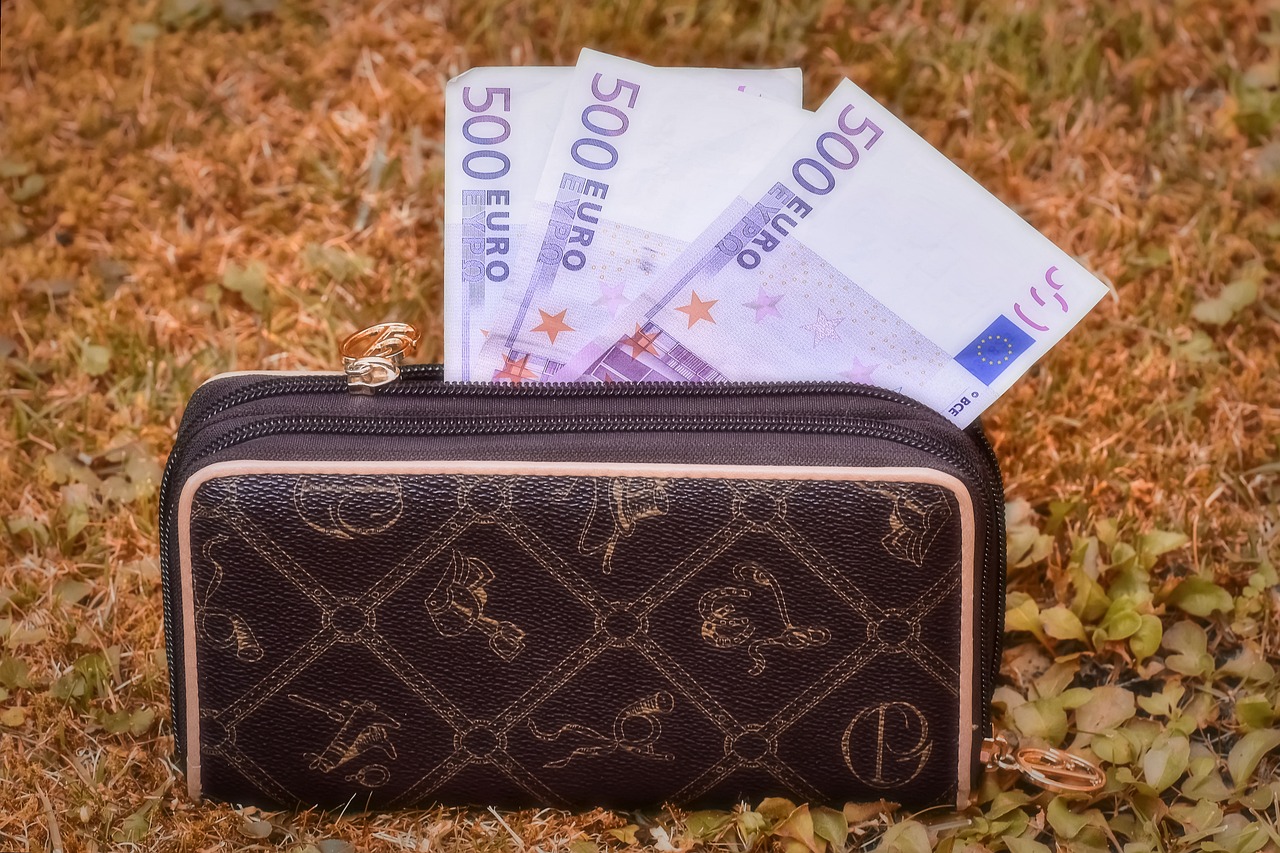
Backing Up Your Wallet
Backing up your wallet is not just a precaution; it's a vital step in safeguarding your cryptocurrency assets. Imagine waking up one day to find that your digital treasures have vanished into thin air because you didn’t take the time to create a backup. The thought alone can send shivers down any trader's spine! So, how can you ensure that your wallet is secure and that your funds are safe from unexpected mishaps? Let's dive into the essential methods and best practices for backing up your wallet.
First off, it's crucial to understand that there are several ways to back up your wallet, and the method you choose can depend on the type of wallet you're using. For instance, if you're using a hot wallet, you might want to focus on cloud-based backups, while cold wallets typically require physical backups. Here are some effective backup methods you should consider:
- Paper Wallets: This involves printing your private keys and public addresses on a piece of paper. While this method is incredibly secure against online threats, you must ensure that the paper is stored in a safe place, as losing it means losing access to your funds.
- USB Drives: Storing your wallet data on a USB drive is another excellent option. Make sure to encrypt the drive to add an extra layer of security. This way, even if someone gets their hands on the USB, they won't be able to access your wallet without the encryption key.
- Cloud Storage: Using a reputable cloud storage service can be convenient. However, it comes with its own risks, as cloud accounts can be hacked. Always enable two-factor authentication on your cloud account to enhance security.
Regardless of the method you choose, make sure to follow these best practices:
- Regular Backups: Don’t just back up your wallet once and forget about it. Regularly update your backup, especially after significant transactions or changes.
- Test Your Backup: It's essential to periodically test your backup to ensure that it works. Try restoring your wallet from the backup to confirm that you can access your funds when needed.
- Secure Storage: Store your backup in a secure location, whether it's a safe, a safety deposit box, or a secure digital storage solution. The key is to make it hard for anyone else to access your backup.
In conclusion, backing up your wallet is a non-negotiable step in crypto trading. By implementing these methods and best practices, you can rest easy knowing that your assets are protected against unforeseen circumstances. Remember, in the world of cryptocurrency, a little foresight can save you from potential heartache. So, take action today and secure your digital wealth!
Here are some common questions that arise regarding wallet backups:
- How often should I back up my wallet? It's recommended to back up your wallet every time you make a significant transaction or change your wallet settings.
- Can I back up my wallet on multiple devices? Yes, but ensure that each device is secure and that you use strong passwords and encryption methods.
- What should I do if I lose my backup? If you lose your backup and your wallet does not have a recovery feature, unfortunately, you may lose access to your funds permanently.
Frequently Asked Questions
- What is a cryptocurrency wallet?
A cryptocurrency wallet is a digital tool that allows you to store, send, and receive cryptocurrencies. It can be software-based (hot wallets) or hardware-based (cold wallets), each offering different levels of security and accessibility.
- What are the different types of wallets available?
There are several types of wallets, including hot wallets, cold wallets, hardware wallets, and paper wallets. Hot wallets are connected to the internet, making them convenient but less secure, while cold wallets are offline and provide enhanced security for long-term storage.
- How do I choose the right wallet for my trading team?
Choosing the right wallet depends on your team’s specific needs. Consider factors like security features, ease of access, compatibility with various cryptocurrencies, and whether your team prioritizes convenience or maximum security.
- What are the advantages of using a hot wallet?
Hot wallets offer quick access to funds and are ideal for active trading. They allow for immediate transactions, which is beneficial when timing is crucial in the volatile crypto market. However, be mindful of the increased security risks.
- Why should I use a cold wallet?
Cold wallets provide superior security by keeping your cryptocurrencies offline, making them less vulnerable to hacks and cyber threats. They are perfect for long-term storage and safeguarding your assets when you’re not actively trading.
- What is a multi-signature wallet?
A multi-signature wallet requires multiple private keys to authorize a transaction, adding an extra layer of security. This feature is particularly useful for trading teams, as it ensures that no single person has complete control over the funds.
- How do I set up a wallet for my trading team?
To set up a wallet, start by choosing a wallet provider that meets your needs. Follow their instructions to create an account, generate keys, and ensure you implement strong security measures like two-factor authentication.
- What are the best practices for backing up my wallet?
Backing up your wallet is crucial to prevent loss of funds. Use multiple backup methods, such as writing down your recovery phrase and storing it in a secure location, or using cloud storage with encryption. Regularly update your backup to reflect any changes.





